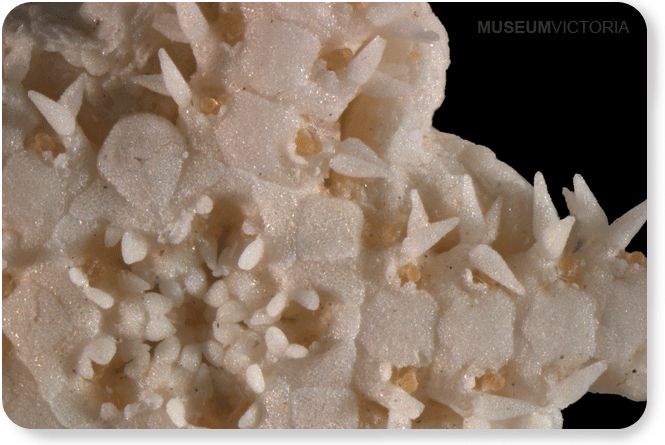
Home -> Species index -> Species description
 More images | Distribution map More images | Distribution map | F 93214, 101722, 93258. Family - Amphiuridae. |
Description The disc is flat, 3 mm diameter. The radial shields are narrow, straight-sided or elongated oval, separated and parallel to one another, with 1 plates between them; 3 times long as wide, and length 0.21 times d.d. The dorsal surface is covered by plates, no spines/granules, with a visible diameter of 0.1–0.3 mm, overlapping; primary plates visible or not visible. The ventral interradial surface is plated. The oral shields are exposed, teardrop or diamond, as long as wide. The adoral shields are exposed, extending to lateral edge of oral shield, separated radially, meeting interradially. Bursal slits reduced, not bordered by spines or papillae. The jaw is wider than long, with two, pointed or tapering apical papilla or rounded apical papilla, as wide as long. Oral papillae separated by a gap from apical papillae, pointed. The oral tentacle pore is located out of the jaw on top of the ventral disc, with a line of scales on one side of the pore (2 scales). The specimen has five arms, unbranched, moniliform, 5–7 times d.d. Dorsal arm plates, separated, without spines/granules; quadrangular or fan-shaped, and 0.7–0.8 times long as wide. The second ventral arm plates are contiguous with the third plate, pentagonal, and 0.8–0.9 times long as wide. Ventral arm plates of the first free segments separated, quadrangular or pentagonal or hexagonal, and 1–1.1 times long as wide. Tentacle pores along the arm, with two scales, not covering the pore, oval. There are 1–2 arm spines on the first ventral segment, 4–5 on the first free segments. The spines are erect, extending around to the dorsal surface, subequal, and 1–1.5 times as long as one arm segment, pointed or blunt, cylindrical.
Description exported from Delta key and to be finalised when DNA sampling completed. Note species description and image characters may vary slightly in animals of different size within the same species. Cite this publication as: "T O'Hara
(2010). ‘Ophiuroids from deep sea southern Australia. Museum Victoria. Version:
1.0 http://www.museumvictoria.com.au/stars" MUSEUMVICTORIA |